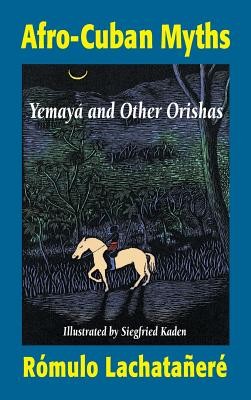
- We will send in 10–14 business days.
- Author: R Lachataanere
- Publisher: Markus Wiener Publishers
- Year: 2014
- Pages: 178
- ISBN-10: 1558763171
- ISBN-13: 9781558763173
- Format: 15.2 x 22.9 x 1.1 cm, kieti viršeliai
- Language: English
- SAVE -10% with code: EXTRA
Reviews
Description
A moving collection of myths and tales, Afro-Cuban Myths was first published in 1938 under the title Oh, MÃo Yemayá! These stories lead readers into a marvelous and magical world: the extraordinary imaginations of Afro-Cubans. Destined to become a classic in its field, it was the first to gather a sizable sample of Cuban patakÃes (myths) characteristic of the Regla de Ocha (or SanterÃa), the most widespread Afro-Cuban religion practiced on the island. These fantastical tales represent the profound response by the SanterÃa to some fundamental questions of popular theology and philosophy. Rómulo Lachatañeré had to overcome prejudices that consider the religion and its associated literature undeserving of intellectual attention while he penetrated the secrecy in which black believers cloaked their beliefs and practices. They were fearful -- with good reason -- of attracting disdain, desecration, and persecution. The book also features an introduction by Jorge Castellanos, who has published widely on the influence of African culture on Cuban society.
EXTRA 10 % discount with code: EXTRA
The promotion ends in 22d.15:28:44
The discount code is valid when purchasing from 10 €. Discounts do not stack.
- Author: R Lachataanere
- Publisher: Markus Wiener Publishers
- Year: 2014
- Pages: 178
- ISBN-10: 1558763171
- ISBN-13: 9781558763173
- Format: 15.2 x 22.9 x 1.1 cm, kieti viršeliai
- Language: English English
A moving collection of myths and tales, Afro-Cuban Myths was first published in 1938 under the title Oh, MÃo Yemayá! These stories lead readers into a marvelous and magical world: the extraordinary imaginations of Afro-Cubans. Destined to become a classic in its field, it was the first to gather a sizable sample of Cuban patakÃes (myths) characteristic of the Regla de Ocha (or SanterÃa), the most widespread Afro-Cuban religion practiced on the island. These fantastical tales represent the profound response by the SanterÃa to some fundamental questions of popular theology and philosophy. Rómulo Lachatañeré had to overcome prejudices that consider the religion and its associated literature undeserving of intellectual attention while he penetrated the secrecy in which black believers cloaked their beliefs and practices. They were fearful -- with good reason -- of attracting disdain, desecration, and persecution. The book also features an introduction by Jorge Castellanos, who has published widely on the influence of African culture on Cuban society.


Reviews